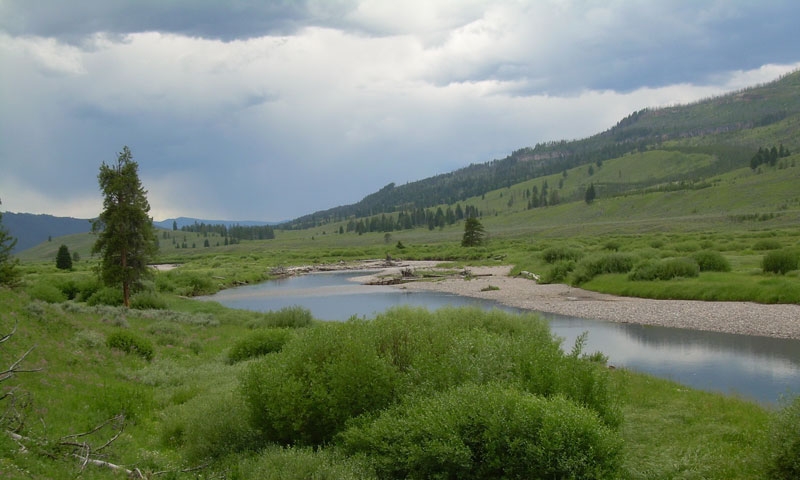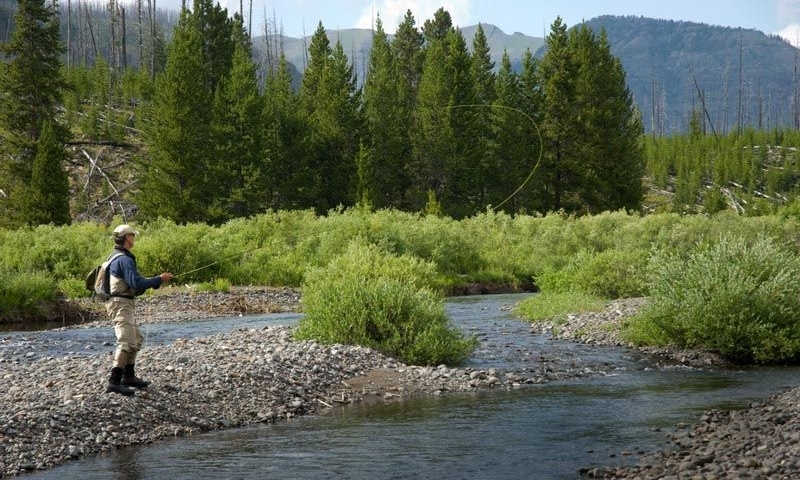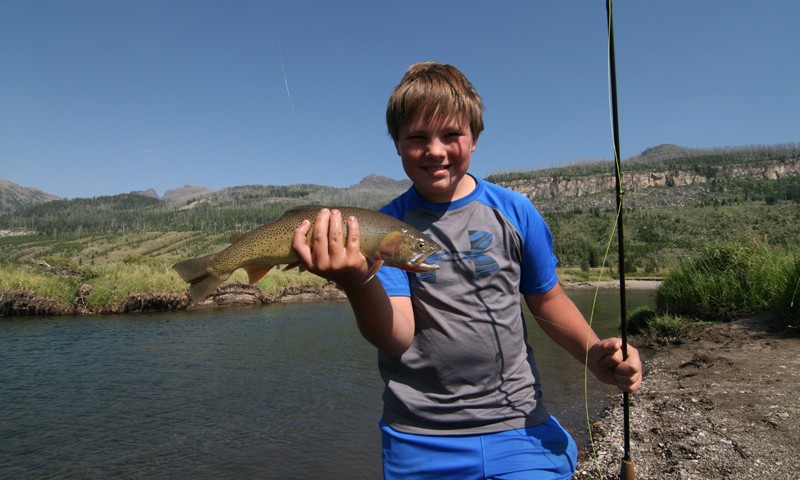What can I see and do at Slough Creek?
Fishing
Suggestion #1 – hire a guide. To truly appreciate how special this resource is, we suggest tapping the expertise of someone who knows its secrets and can share them with you.
- Flies: Though single-hook lures are allowed, the most productive way to fish Slough Creek is with flies. Due to its rich aquatic life, Slough produces incredible hatches of aquatic insects throughout its open season, and in abundant numbers. In early season (July), hatches of pale morning dun, caddis, red quills, little western green drakes and many types of terrestrials can take place simultaneously. As August approaches, caddis and some mayflies continue on as do terrestrials. By late August and early September, tricos and blue winged olives come into being along with ants, hoppers and beetles. By mid September, fish become more aggressive and predatory, and begin chasing Wooly Buggers, Chernobyl Ants and Turcks Tarantulas.
- Season: Depending on spring snowpack, Slough generally becomes fishable in early July, but be prepared for swift currents and off-color water. As summer progresses, water levels fall, clarity improves and water temperatures gradually increase. Peak activity and the best angling is usually around July 15-30th. So long as you are prepared for the very real potential for a foot or more of snow on the trail, good fishing should continue well into October before rapid drops in water temperatures force fish to retreat into their winter holes.
- Access:
- Lower Creek: Access to the lower creek (the Lamar River upstream) can be via hiking trails off the Northeast Entrance road out of Tower Junction (about 2 miles east of the Yellowstone River bridge), or the Slough Creek campground dirt road. Around the campground itself, the creek sees a lot of angler pressure, thus fishing gets better the farther you get from that congregation point.
- Slough Creek Backcountry: The best fishing, by far, is ‘up and over’ – the Slough Creek backcountry trail that goes over a 600-ft saddle down into what is typically called the ‘first meadow’. Anglers can easily walk from the backcountry trail along the oxbow bends upstream for 2.5 miles, catching 8”-16” native Yellowstone cutthroat trout, before getting to the second meadow. Much like the first meadow, the second meadow section provides simple trails along the creek edges for anglers to use when stalking fish along the way. About 2.5 creek miles upstream, around backcountry campsites 2S4 and 2S6, a third meadow appears that stretches to the Parks border in Montana. From a fishing quality standpoint, both size and numbers of cutthroat are greater the further upstream you go. Fish as large as 22-23” have been taken in the upper reaches of the third meadow in mid September.
Camping
Slough Creek camping is yet another ‘must-do’ item when visiting Yellowstone. In addition to being served by a full-service campground, campers can enjoy multiple backcountry campsites in the first 3 meadows mentioned above. Reservations and on-site registration for these coveted camp locations go quickly, so act early. Most camp spots are in close proximity to the creek, or nearby streams, so always boil your water as a precaution.
Backpacking
One popular tour lots of hikers and campers enjoy is to do a loop between the Slough Creek and Pebble Creek drainages, accessed via Bliss Pass. When looking on the Yellowstone Park backcountry map, look for camp units near Pebble Creek 3P2 and 3P3. The scenery between these two drainages is incredible and can be done leisurely over one- or two-nights. Of course, have your bear spray with you – this is prime country for black and grizzly bears.
Wildlife
Speaking of wildlife, Slough Creek is home to good populations of meandering bison, occasional antelope, ambulatory packs of wolves, herds of elk, moose, and along the cliff faces to the east, one can spot Rocky Mountain bighorn sheep. Also prevalent are mule deer, marmots, soaring eagles and osprey.
Where is Slough Creek?
Slough Creek is located in the North East corner of Yellowstone National Park between Tower-Roosevelt and Pebble Creek. This remote section of the park is often less crowded.
When is Slough Creek accessible?
The road between Mammoth Hot Springs and the North East Entrance is open year-round. However the campground closes at the end of October and the trails and the Creek itself are usually snow covered through the winter.





















